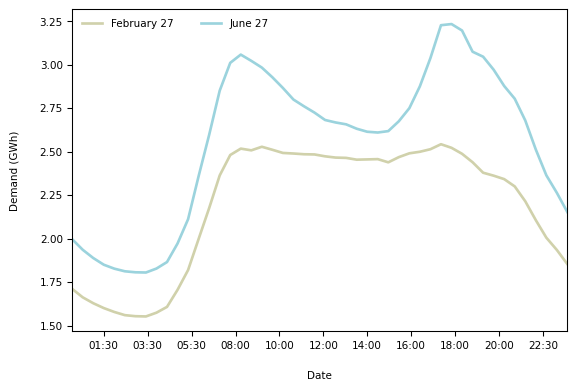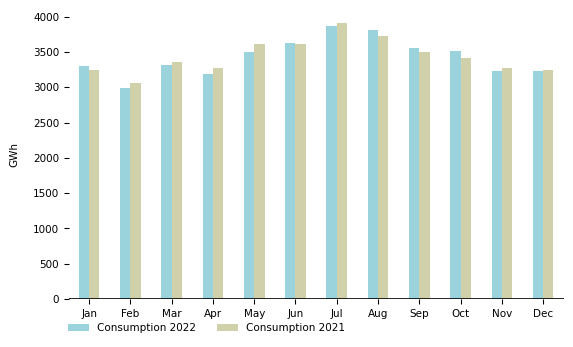Eye on electricity
The changing nature of electricity demand in Aotearoa
- Consumers
Electricity in New Zealand is supplied by hydro, geothermal, thermal and wind generation. Hydro and thermal generation have some capacity to store energy – in hydro storage reservoirs or as thermal fuel stockpiles. However, once the electricity has been produced it can’t be stored. So, electricity supply must always match demand.
Luckily, there are daily and seasonal electricity demand patterns which give some predictability to the system.
Daily electricity demand curves look similar to a camel’s back. In the early morning electricity demand rises from its overnight low, as people make breakfast and shower before work or school. Demand then sinks into a trough around mid-afternoon. In the evening, demand rises again as heating and cooking occur after work. The two peaks in electricity demand are much higher in winter, see Figure 1, as more electricity is used for heating.
Morning peak demand is typically lower during school holidays, as children are allowed to sleep in. Demand on the weekends and public holidays is also lower when compared to weekdays.

There is seasonal variation in electricity demand, which for New Zealand is highest in winter. July typically has the highest monthly demand, as Kiwis heat their homes during cold, dark winter evenings, or on frosty mornings. February normally sees the lowest electricity demand as there is typically less need for air conditioning and irrigation compared to December and January. The differences in the total monthly electricity consumption are shown in Figure 2.
The system operator produces demand forecasts every 30 minutes. Typically, the accuracy of these forecasts improves over time. Weather is the largest factor in forecasting demand, so if the weather forecasters aren’t confident, there is larger uncertainty in the demand forecast. On cold days, differences of just one degree in temperature can have huge impacts on electricity demand. If demand is higher than expected, typically more thermal generation is dispatched, which can cause electricity spot prices to spike, as seen in May 2023.
The increase in electrification of both homes and industry is likely to change Aotearoa’s daily and yearly demand curves. More baseload demand from electrifying industrial processes could see more demand throughout the day and night, effectively shifting the entire demand curve up a little. Greater use of heat pumps could increase peak demand. Electric vehicle charging could also increase demand and there could be a shift to charge overnight, rather than when people return from work.

Over the past few years, winter peak demand has been increasing1. During some winter peak demand periods, the amount of spare generation capacity has been small. In 2022, the Electricity Authority consulted on measures to help the industry overcome the challenges associated with winter peak demand in 2023. The measures we introduced now give industry participants more information on demand sensitivity to temperatures and forecast wind generation. There is also greater clarity on demand response measures like ripple control.
As the nation electrifies and more renewable generation is built, new technologies will be needed to allow demand to be met with varying wind and solar outputs. For example, grid scale batteries will be used to allow excess electricity to be stored for later use.
The Electricity Authority is investigating how distribution networks will play a part in the energy transition, for example through our distribution pricing reform and updating of regulatory settings. Further, demand response will allow consumers to reduce their electricity consumption when necessary. You can read more about these changes in our recent explainer on the electricity sector transition.
Related News
First compliance reports for retailers under Consumer Care Obligations due 30 September
The Electricity Authority is notifying electricity retailers that their 2024/25 compliance reports for the Consumer Care Obligations are now available to compl…
Electricity Authority appoints Daylight to deliver new comparison and switching service
The Electricity Authority has appointed innovative technology and creative studio Daylight to develop a new energy comparison and switching service.
Highlighting retailers’ obligations to protect medically dependent consumers
Under the Consumer Care Obligations retailers must not disconnect registered medically-dependent consumers, and must notify the Authority as soon as they becom…